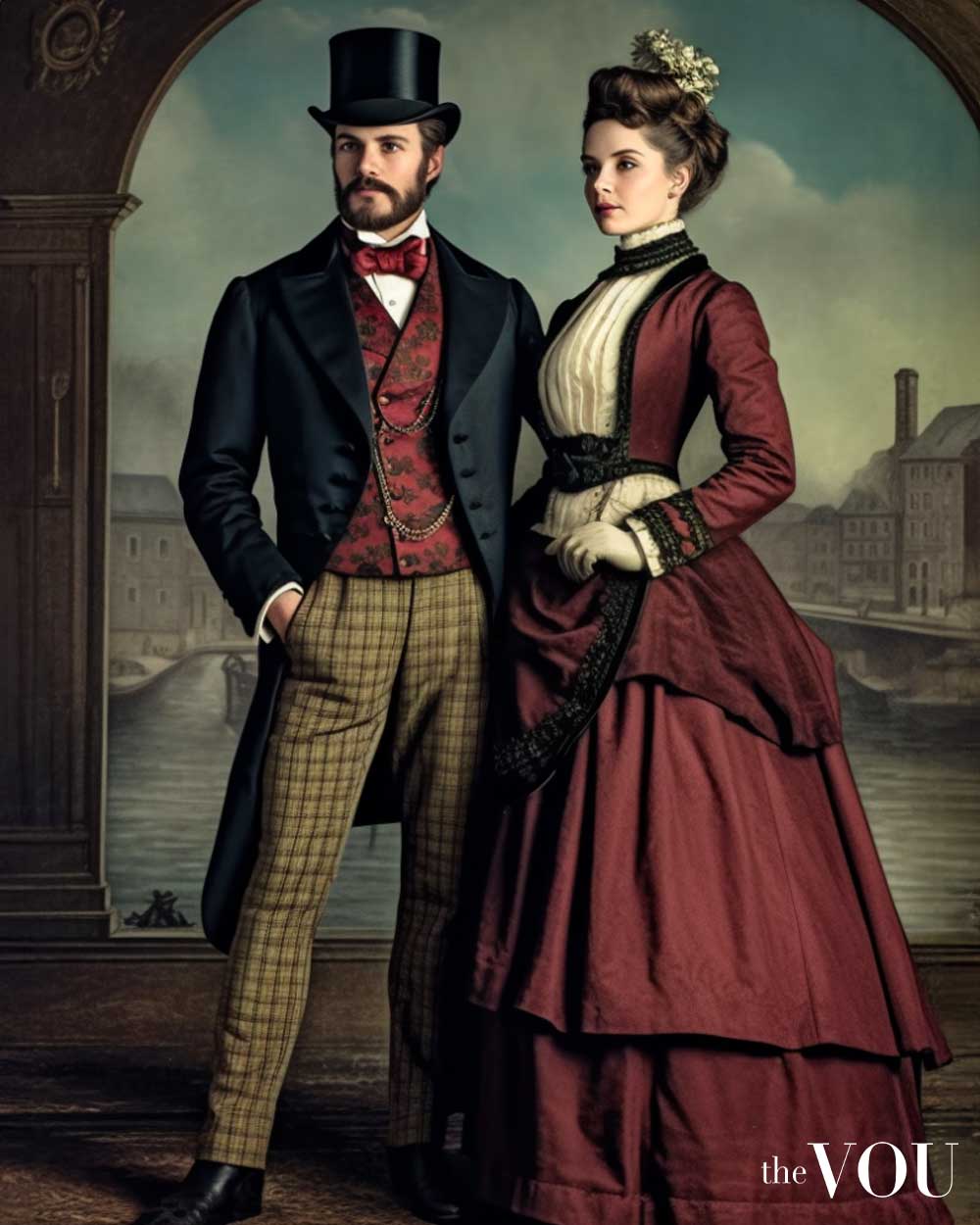
Characterized by complex social, technological, and aesthetic changes, the Victorian era – Queen Victoria’s reign from 1837 to 1901 – gave rise to a distinctive sartorial language.
Victorian-era garments were more than clothing articles; they were narratives of identity, societal values, technological progress, and artistic creativity.
Victorians used fashion to represent the time’s idealized gender roles visually.

Women’s outfits focused on modesty and femininity, and men’s looks echoed the values of respectability and restraint.
And, as the middle class began emulating the styles of the aristocracy, fashion became a tool in symbolizing power, wealth, and status.
Early Victorian Fashion (1837-1850)
The early Victorian period, marked by the ascension of Queen Victoria, was deeply influenced by the monarch’s dressing style, embodying a fusion of grandeur and precision, opulence and restraint.
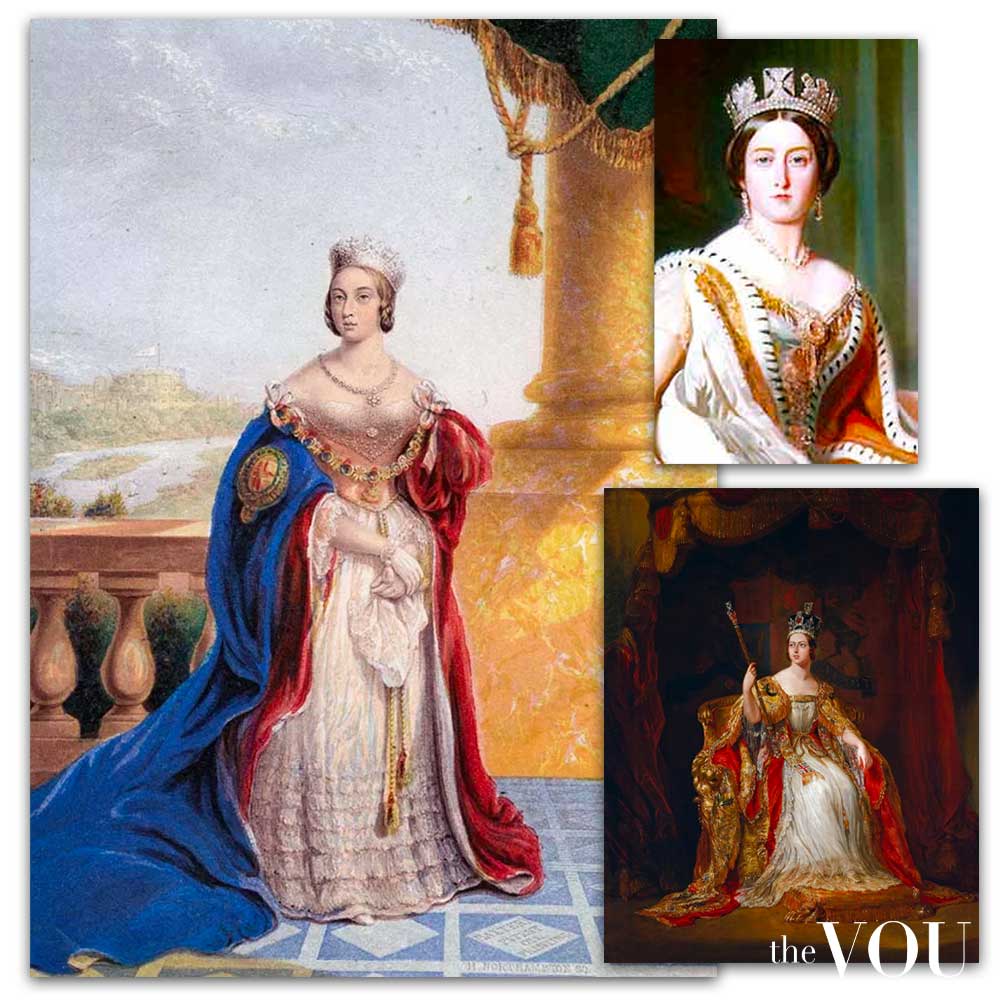

Women’s fashion featured voluminous, bell-shaped skirts supported by layers of stiff petticoats (later by the crinoline, introduced in the 1850s) complemented by bodices with narrow, corseted waists, high necklines, and long sleeves.
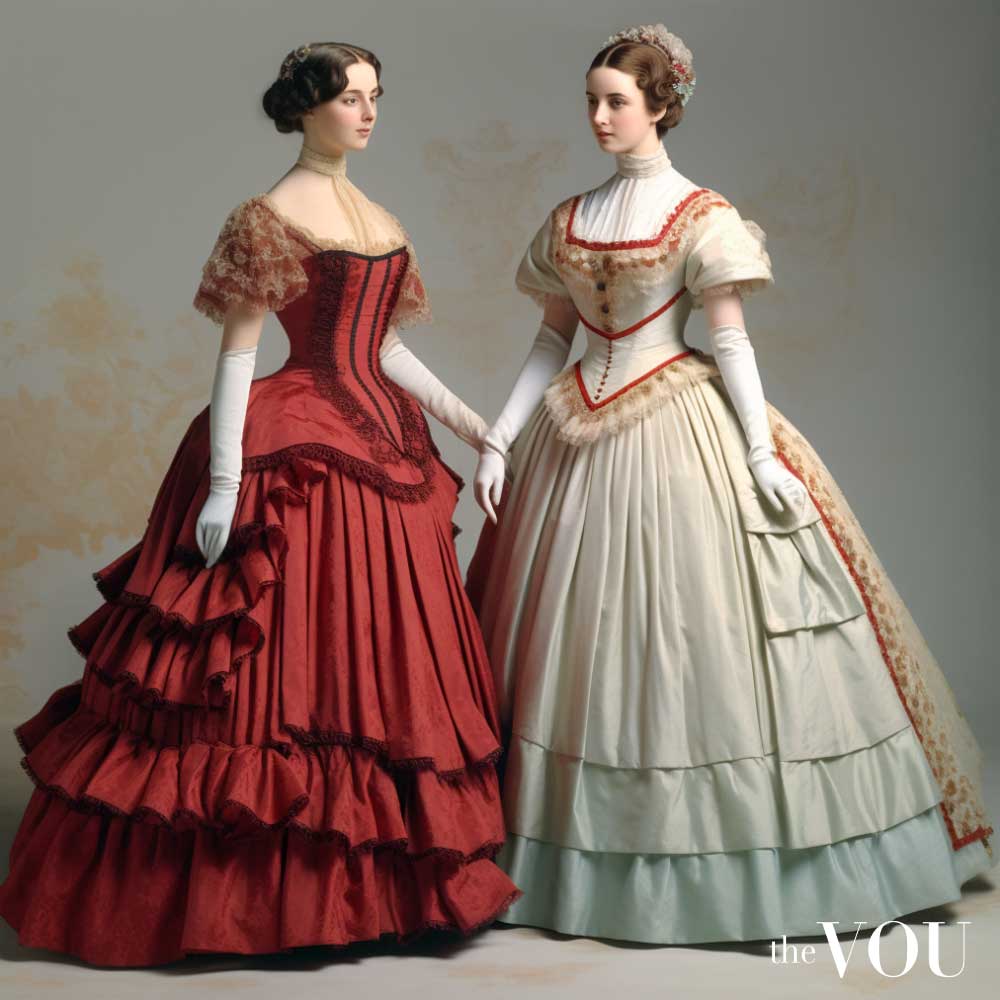

The corset – a Victorian fashion staple – was crucial for creating the desired hourglass figure, cinching the waist and emphasizing the bust and hips.
Since the Victorian era, the narrow waist achieved through corsetry has become a symbol of femininity and grace.
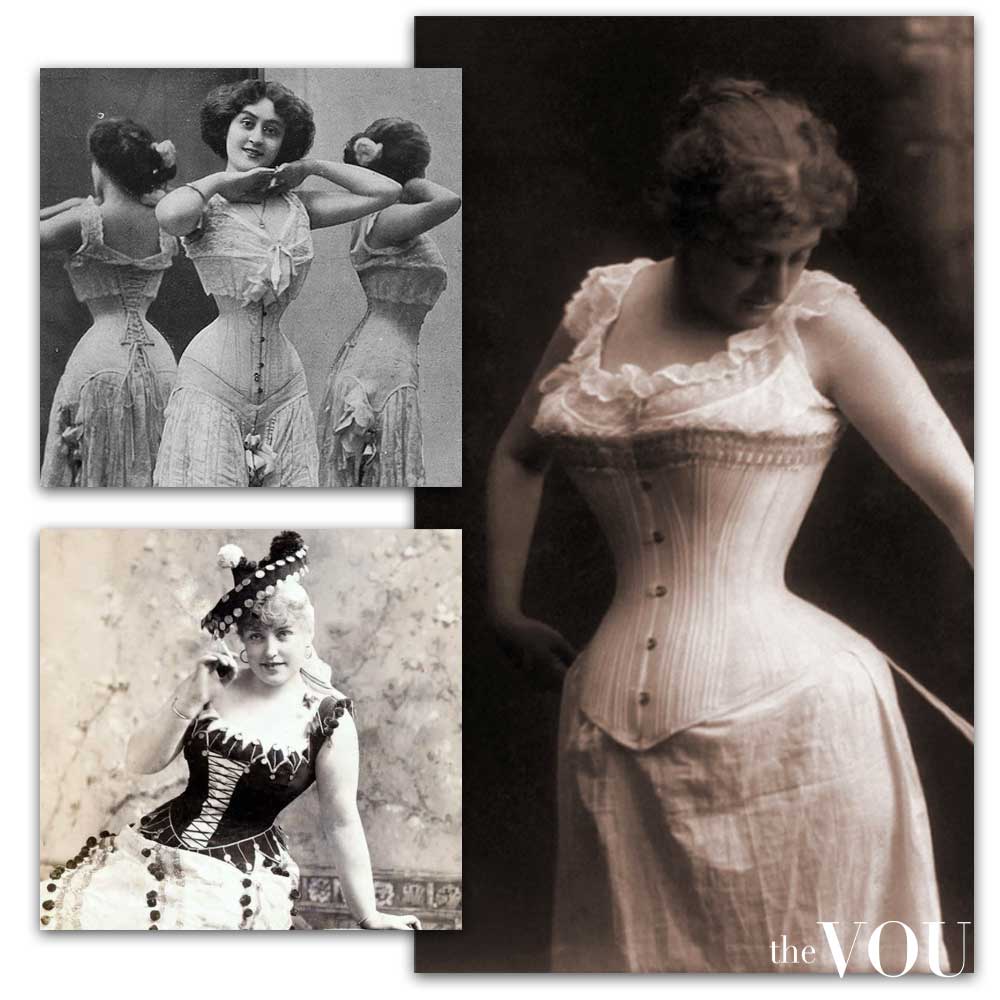

Victorian women’s day attire was made from practical and less opulent fabrics like cotton and wool, with high necklines and long sleeves in subdued daywear colors.
In contrast, evening gowns were made from silk or velvet, with lower necklines and shorter sleeves, and in sapphire, emerald, or ruby colors, and ornate with lace, ribbons, and floral patterns.
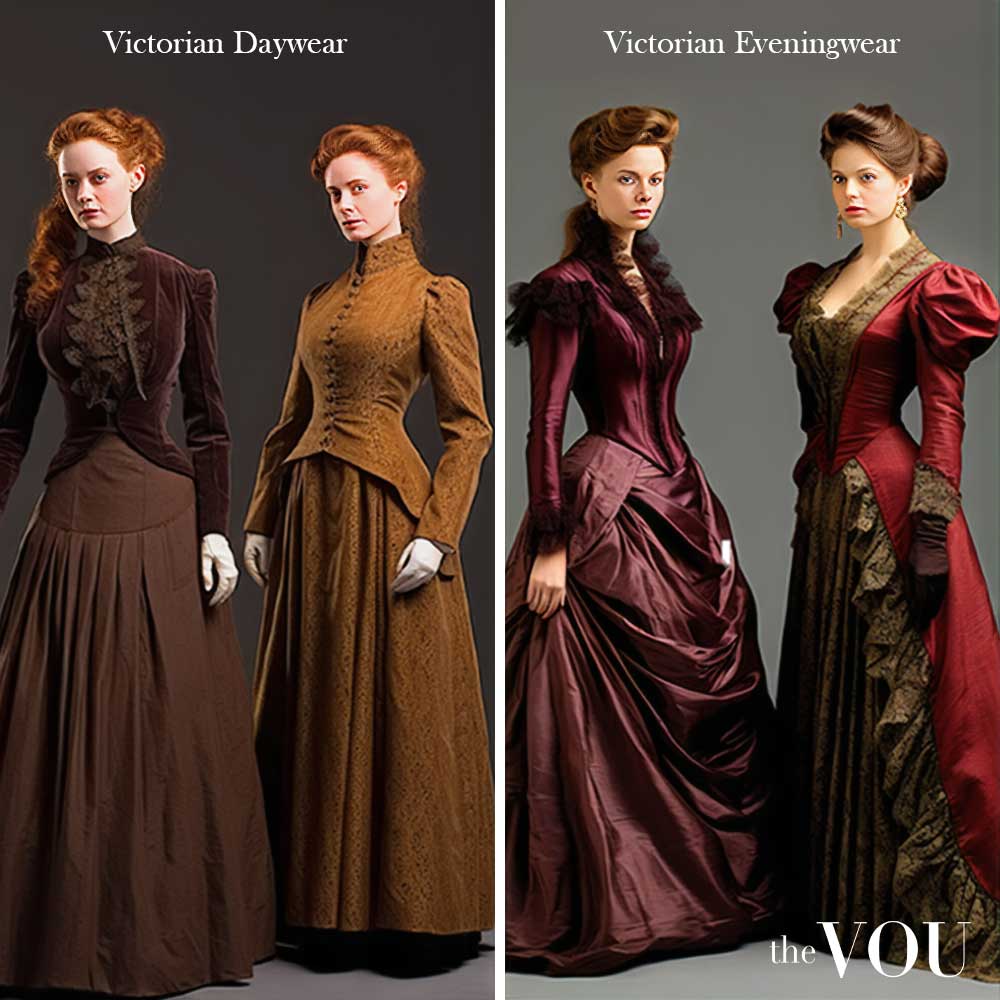

In contrast, Men’s fashion showcased a more uniform and somber palette, dominated by charcoal, navy, and deep green.
The period saw the introduction of the frock coat, a staple in Victorian men’s wardrobes, paired with waistcoats and full-length trousers.
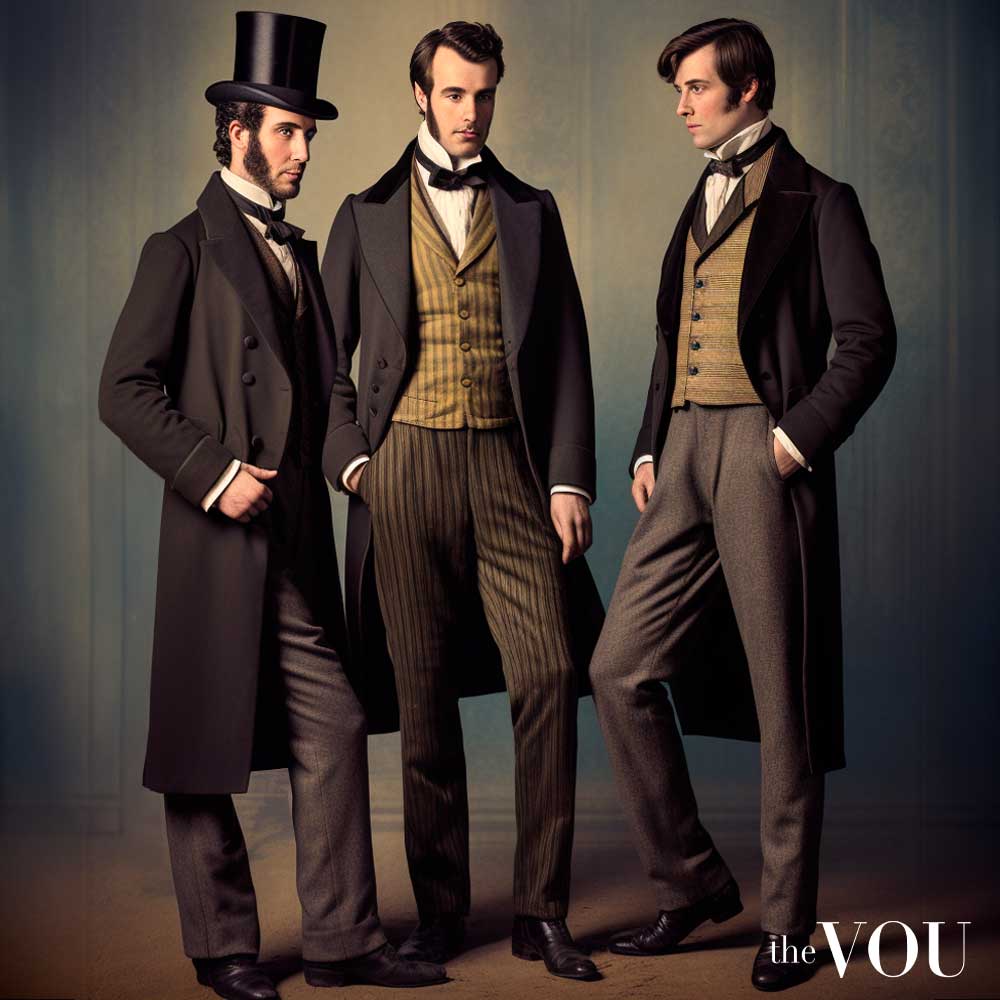

Victorian-era accessories were crucial in signifying the wearer’s social status and fashion awareness.
Women wore bonnets trimmed with ribbons and lace, and men wore top hats made of silk or beaver fur.
Mid-Victorian Fashion (1851-1870)
The mid-Victorian era marked a pivotal change in women’s fashion with the introduction of crinoline in the 1850s.
The cage-like structure made of steel or whalebone was worn under the skirt to reduce fabric weight while creating an hourglass silhouette, a defining characteristic of Victorian fashion.
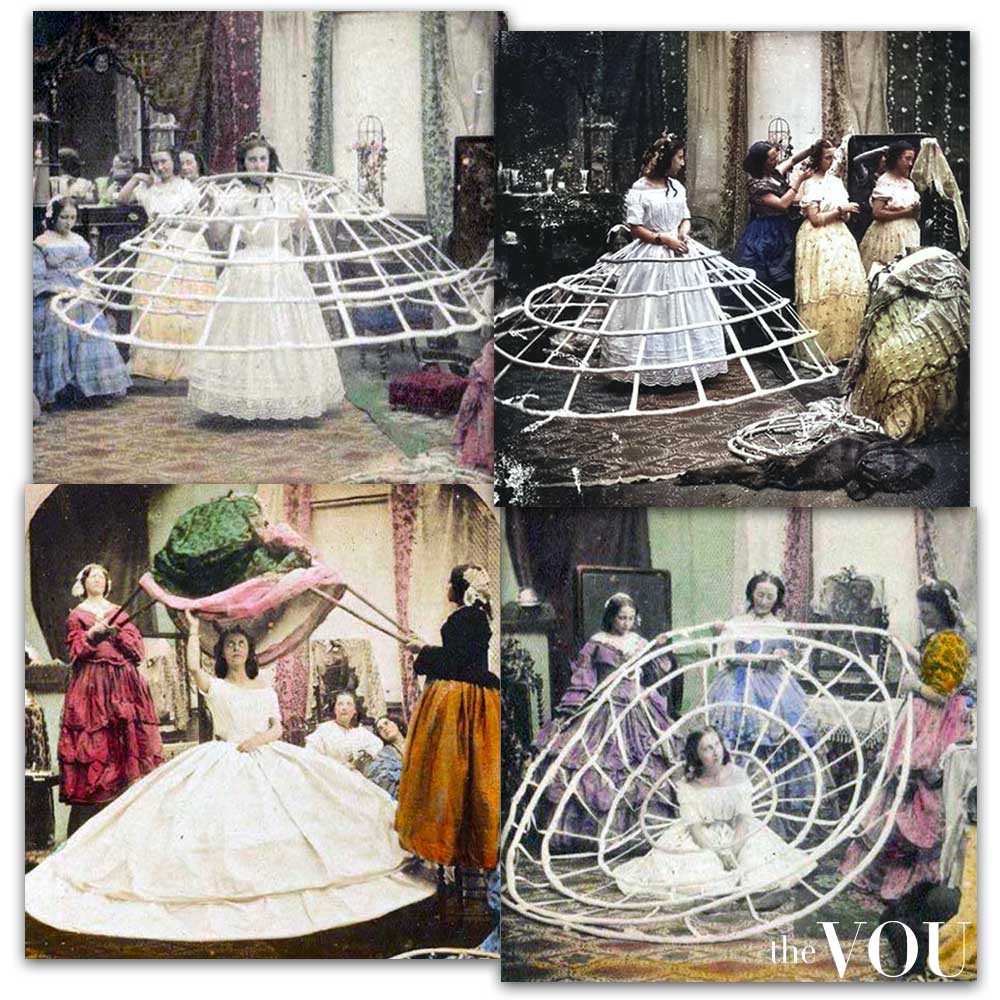

While wide, bell-shaped skirts cinched at the waist with corsets and adorned with lace, embroidery, and ribbons were still prevalent, the ‘Bloomer’ costume started to gain traction.
the Bloomer costume or just ‘bloomers,’ included a short jacket, a skirt extending below the knee, and loose Turkish pants, gathered at the ankles.
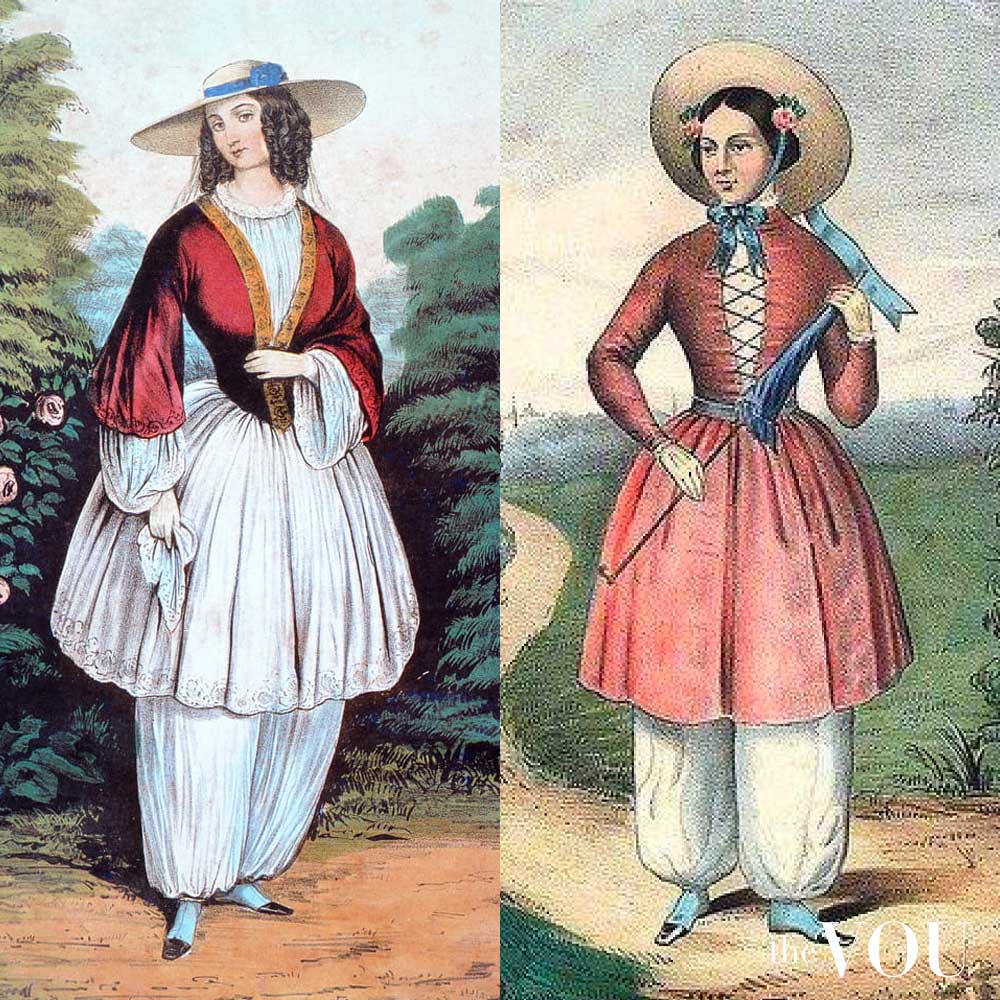

The ‘Princess’ dress, with a seamless waist, and the ‘Garibaldi’ blouse, a red shirt inspired by the Italian Revolution, became popular in the 1860s.
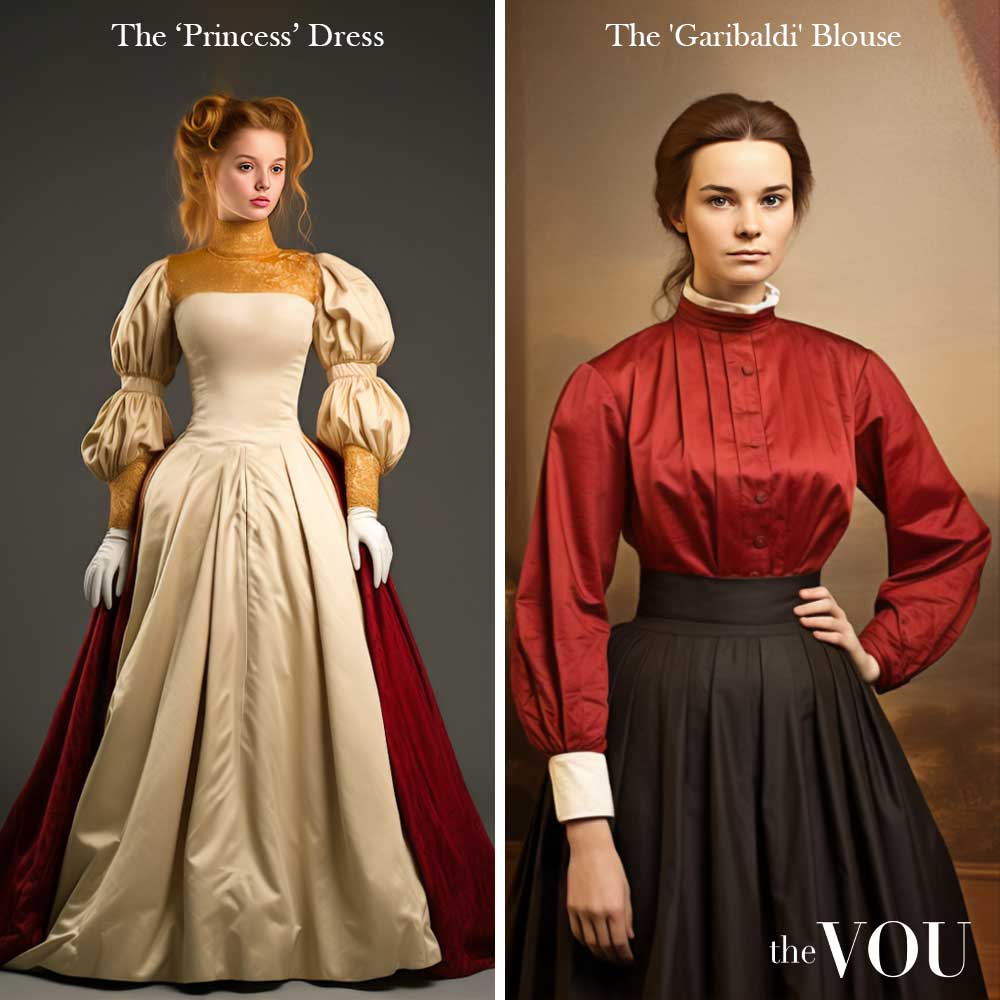

Mid-Victorian men’s fashion departed from the strictly formal attire of previous decades, signaling a shift towards practicality and lighter male dress codes.
The sack suit, lacking a waist seam and made of tweed or flannel in a looser-fitting style, emerged as a more comfortable alternative to the previously dominant frock coat.
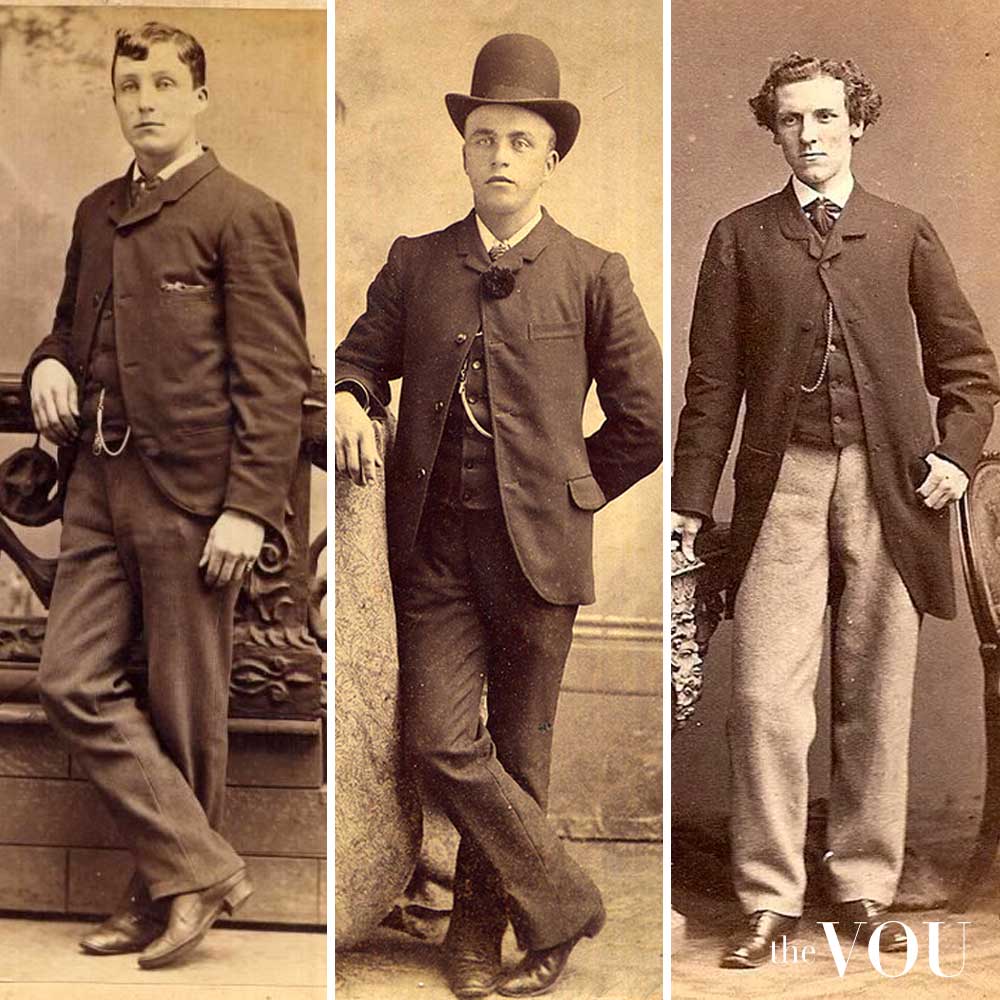

Waistcoats and trousers remained relatively unchanged, but new fabrics and colors emerged simultaneously with the ‘Paletot,’ a new type of overcoat.
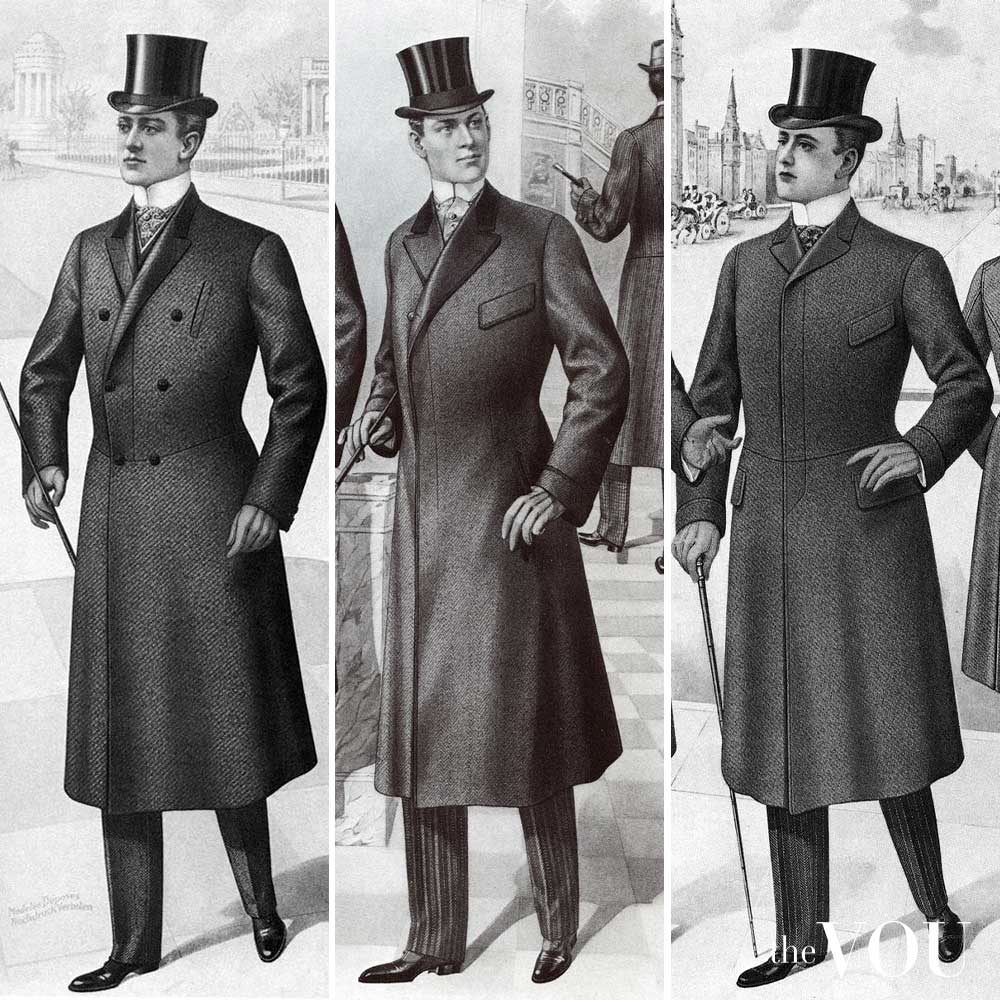

Publications like “Godey’s Lady’s Book”, “Punch,” and “The Englishwoman’s Domestic Magazine” were influential in spreading fashion trends.
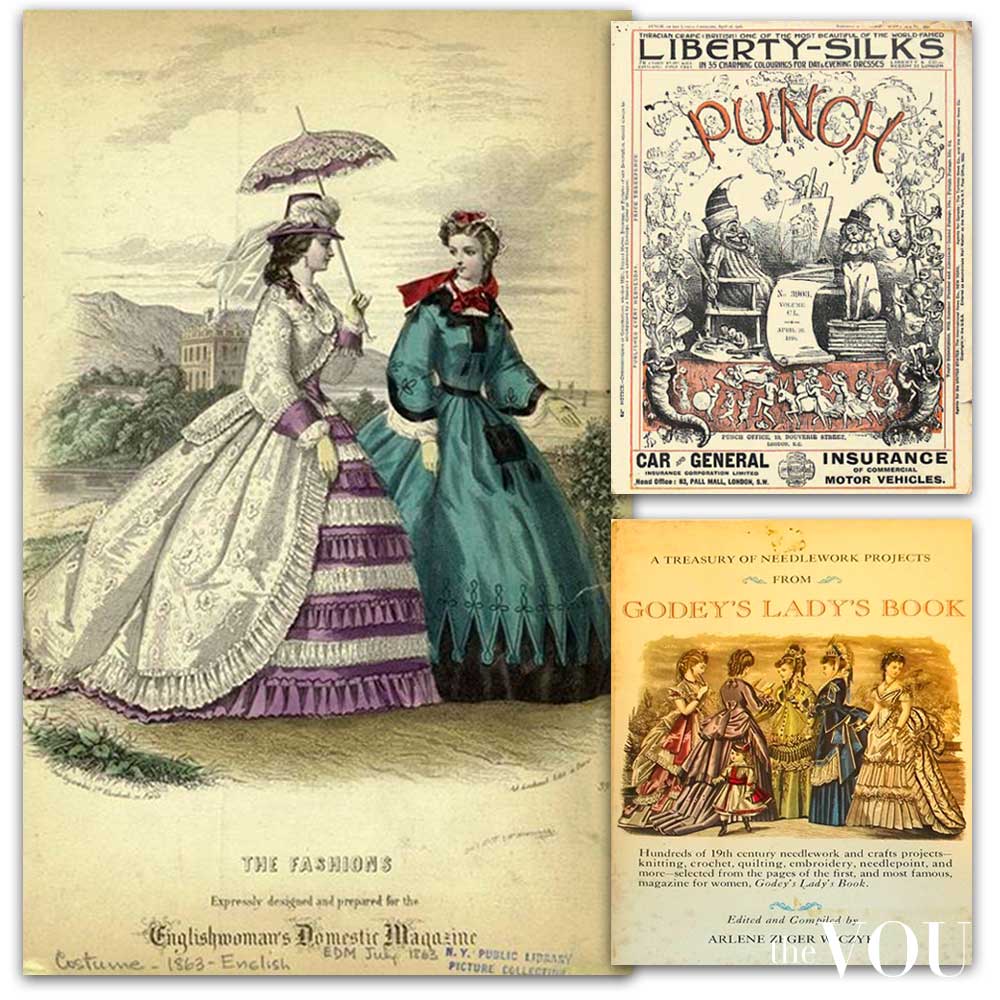

The Industrial Revolution and advancements in textile manufacturing, notably the power loom, reduced fabric production costs and time and transformed fashion during the Mid-Victorian era.
The discovery of synthetic dyes in the 1850s, starting with William Perkin’s mauveine, transformed the fashion industry and allowed for new colors in garments, away from the limited, natural dyes of earlier periods.
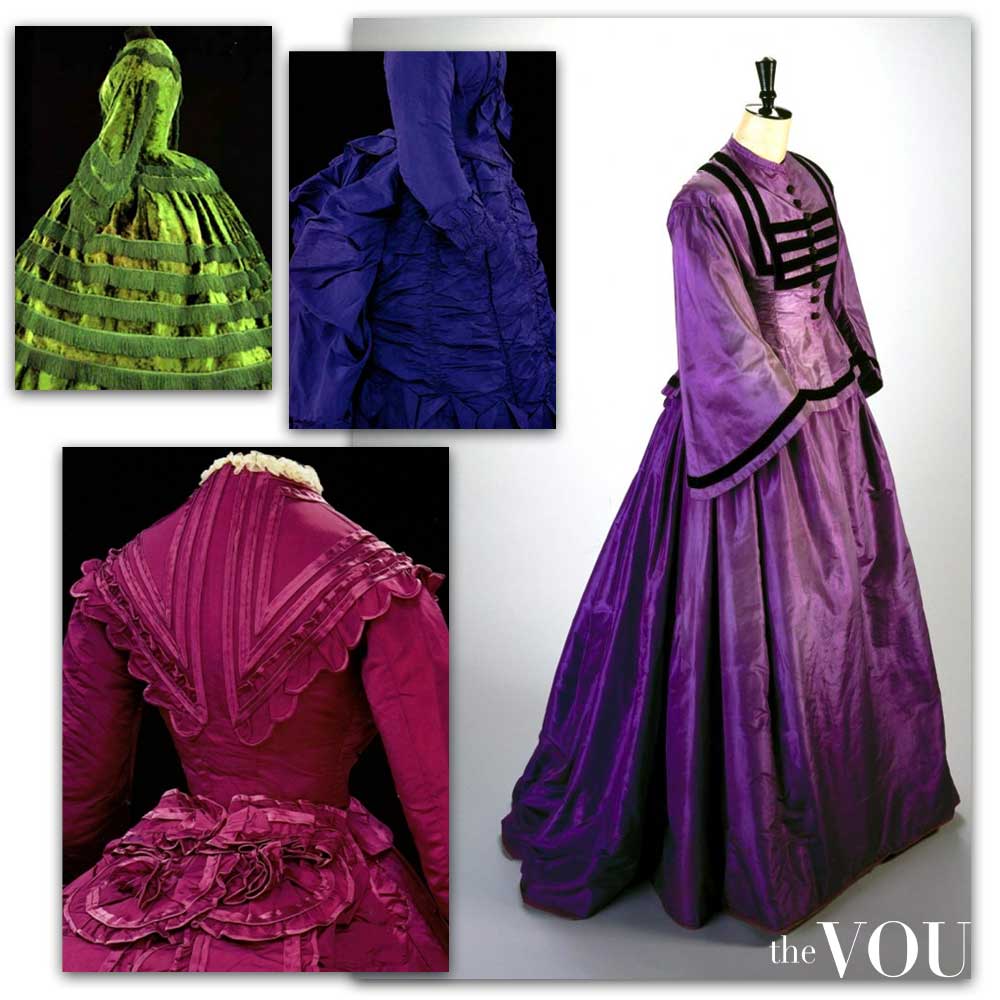

Invented by Elias Howe and popularized by Isaac Singer, the rise of the sewing machine facilitated the mass production of clothing and the standardization of sizes and styles, a precursor to modern ready-to-wear fashion.
New styles and trends emerged faster, clothing became more attainable, and fashion began to reflect societal changes.
Late Victorian Fashion (1871-1900)
The Late Victorian era reflected an elaborate interplay between fashion, art, and society, paving the way for the significant changes of the 20th century.
In the Late Victorian era, specific cultural and artistic movements like the Aesthetic Movement and the Arts and Crafts Movement influenced the time’s styles.
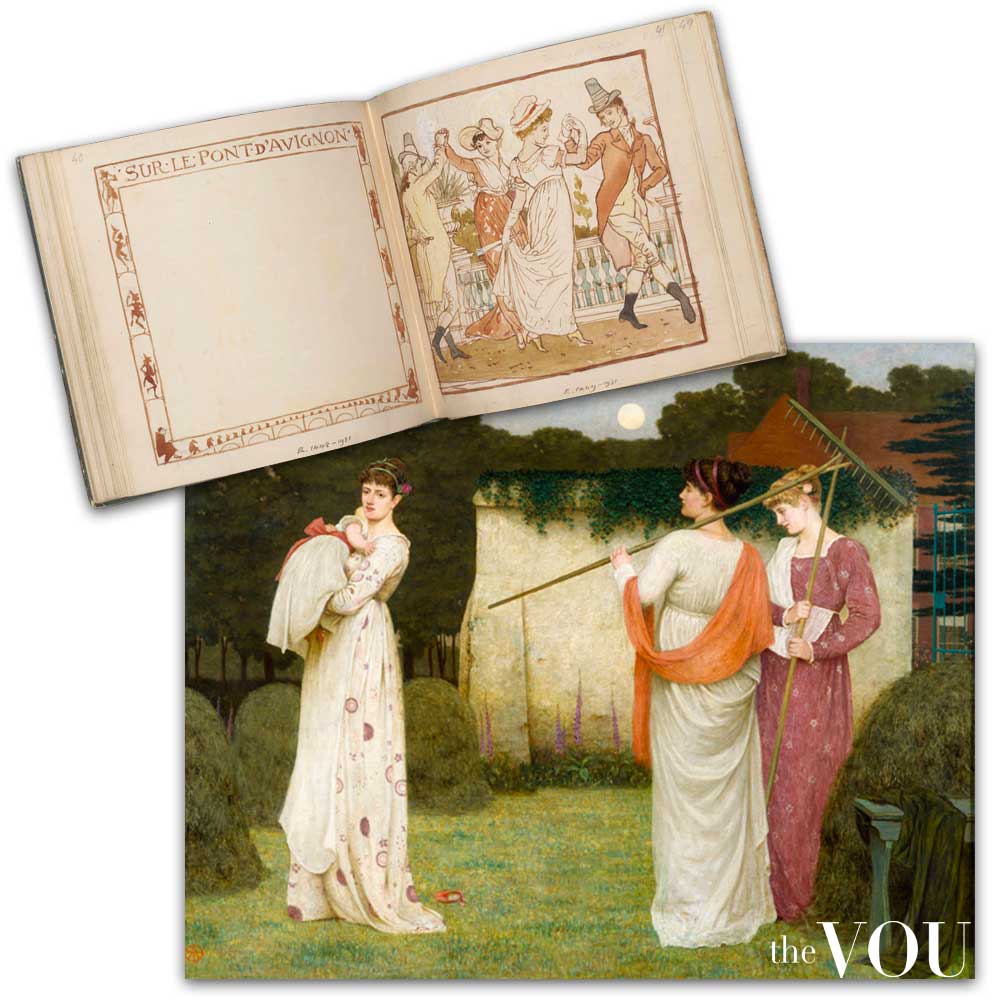

The Aesthetic Movement, with figures like Oscar Wilde, inspired less restrictive, artistic women’s clothing with flowing lines and medieval or classical influences.
The Arts and Crafts Movement, led by William Morris, emphasized handmade clothing from natural materials, resulting in Victorian attire with handmade patterns like lace and embroidery.
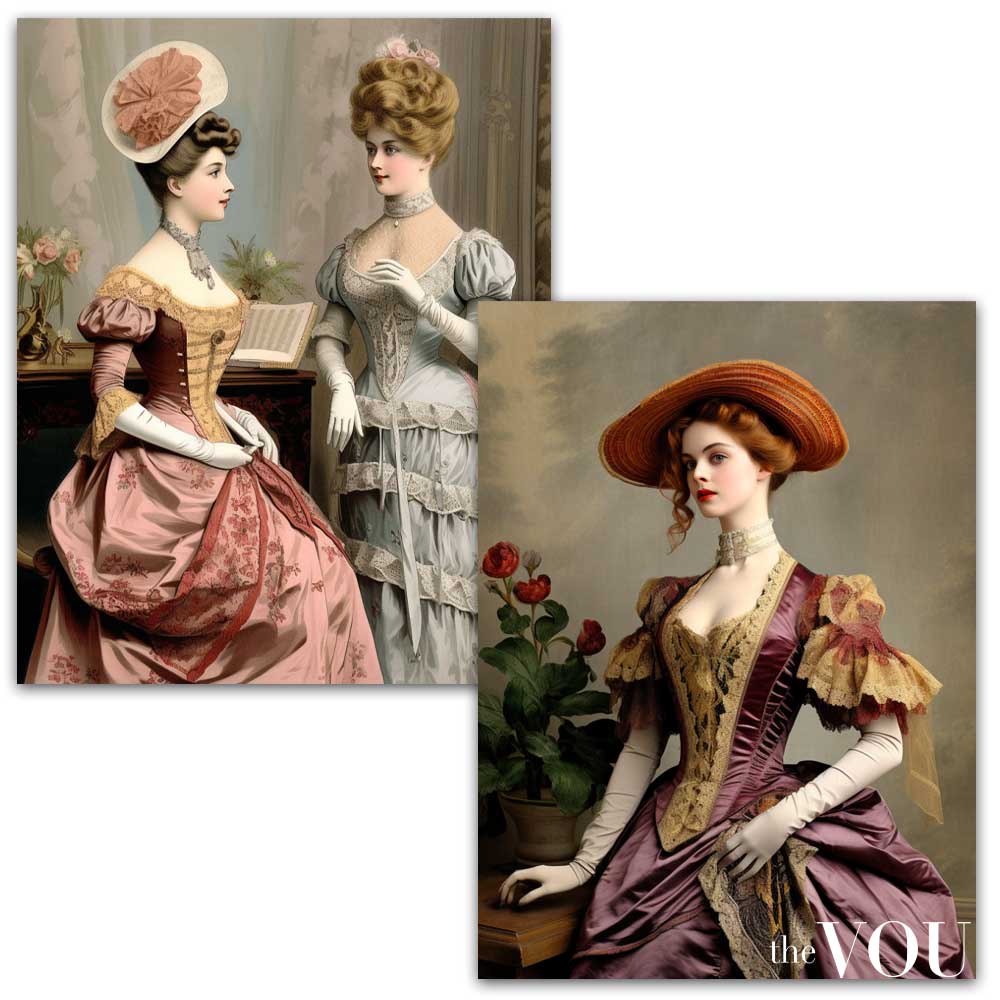

The period marked the beginning of a slight relaxation in the strict rules of dressing, allowing women freedom and comfort though still within the confines of Victorian norms.
Long, flowing trains with tailored bodices that emphasized the cinched waist were still popular, but the Aesthetic dress emerged, emphasizing comfort and artistic beauty over restrictive fashion.
Women’s dresses shifted from crinoline to bustle, a padded undergarment accentuating the skirt’s back.
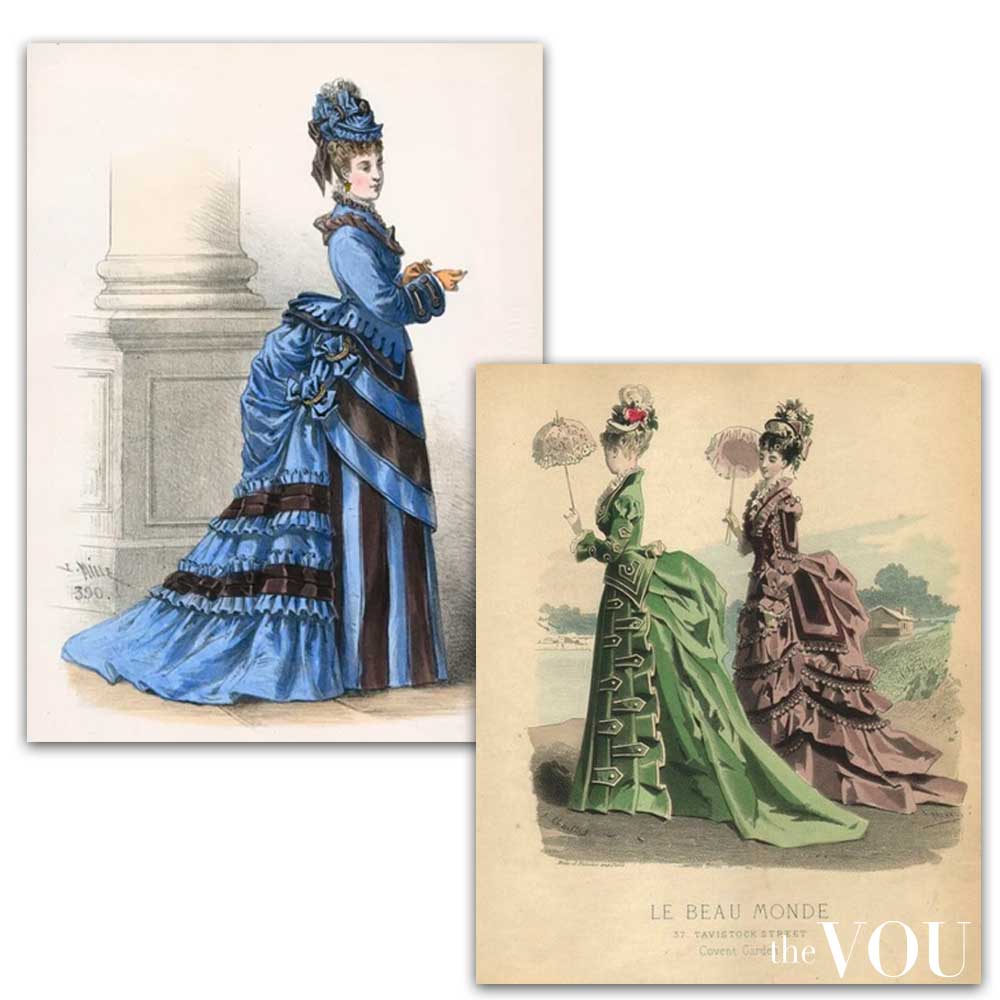

Colors like mauve, olive, navy, and burgundy, and fabrics like velvet, silk, and satin – adorned with lace, embroidery, and ruffles reflected the artistic movements of the time, including the Pre-Raphaelite Brotherhood’s influence on the Aesthetic dress movement.
The Late Victorian era saw a significant evolution in men’s fashion with the growing popularity of the more comfortable and practical lounge suit.
With a less formal design than the frock coat, black, charcoal, and blue lounge suits became the symbol of the professional man and the precursor to the modern business suit.
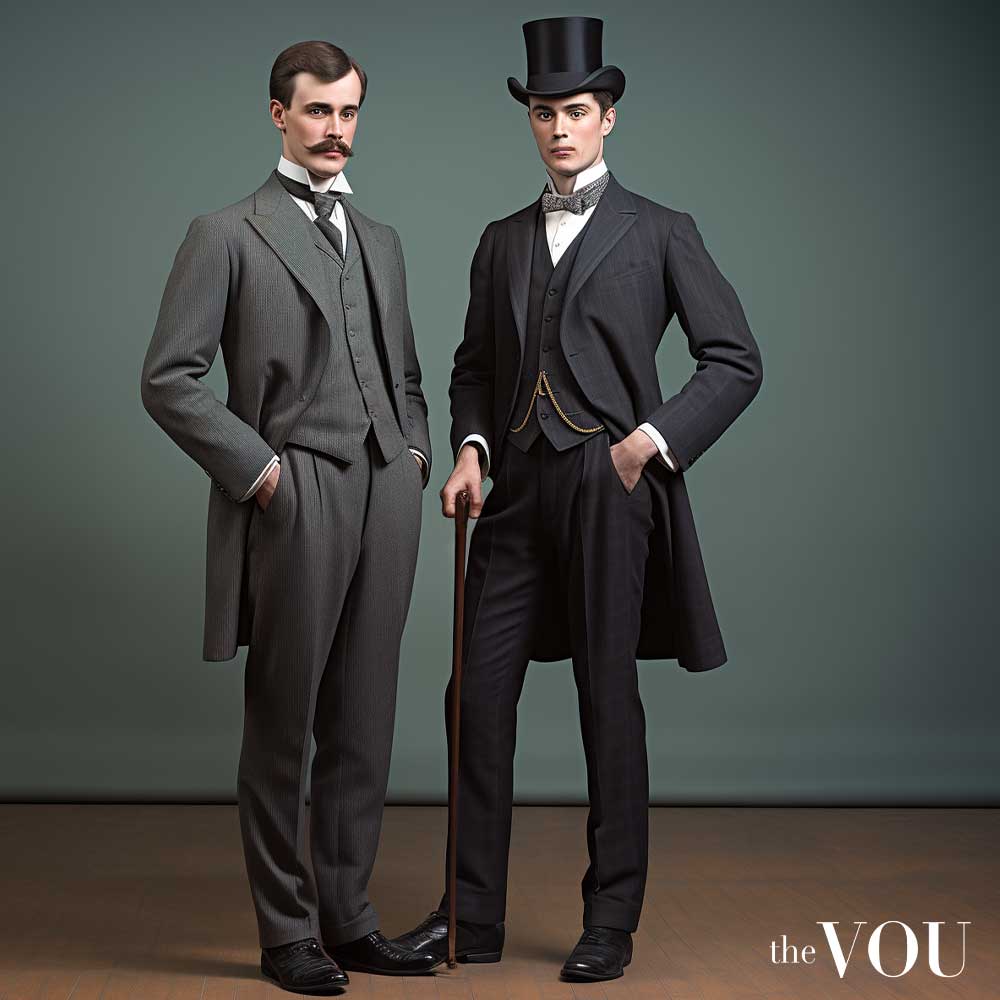

Women’s shoes featured high-buttoned or laced designs made from leather or cloth, while men’s footwear saw the emergence of the Oxford shoe, a style that later became a staple in men’s fashion.
Accessories complemented the outfits and indicated social status and fashion consciousness.
For men, top hats from beaver fur or silk polished to a high sheen, canes from ebony or walnut with silver handles, ties, and pocket watches in various styles and patterns.
For women, silk or taffeta bonnets embellished with ribbons, lace, flowers, feathers, elbow gloves from fine kid leather, and fans.
Victorian Fashion in the Modern Era
Victorian fashion has profoundly influenced popular culture, impacting film, television, and theatre.
Costume dramas like “Penny Dreadful” and “The Crown” showcase meticulous reproductions of Victorian attire, bringing the era’s fashion to life for modern audiences.


With distinct silhouettes, patterns, and ornate details, Victorian fashion is omnipresent in contemporary design, albeit with reinterpreted social meanings.
Alexander McQueen’s Sarah Burton’s use of tight corsetry and high necklines and Vivienne Westwood’s punk-style bustles and crinolines are the best examples of modern attire depicting Victorian aesthetics.
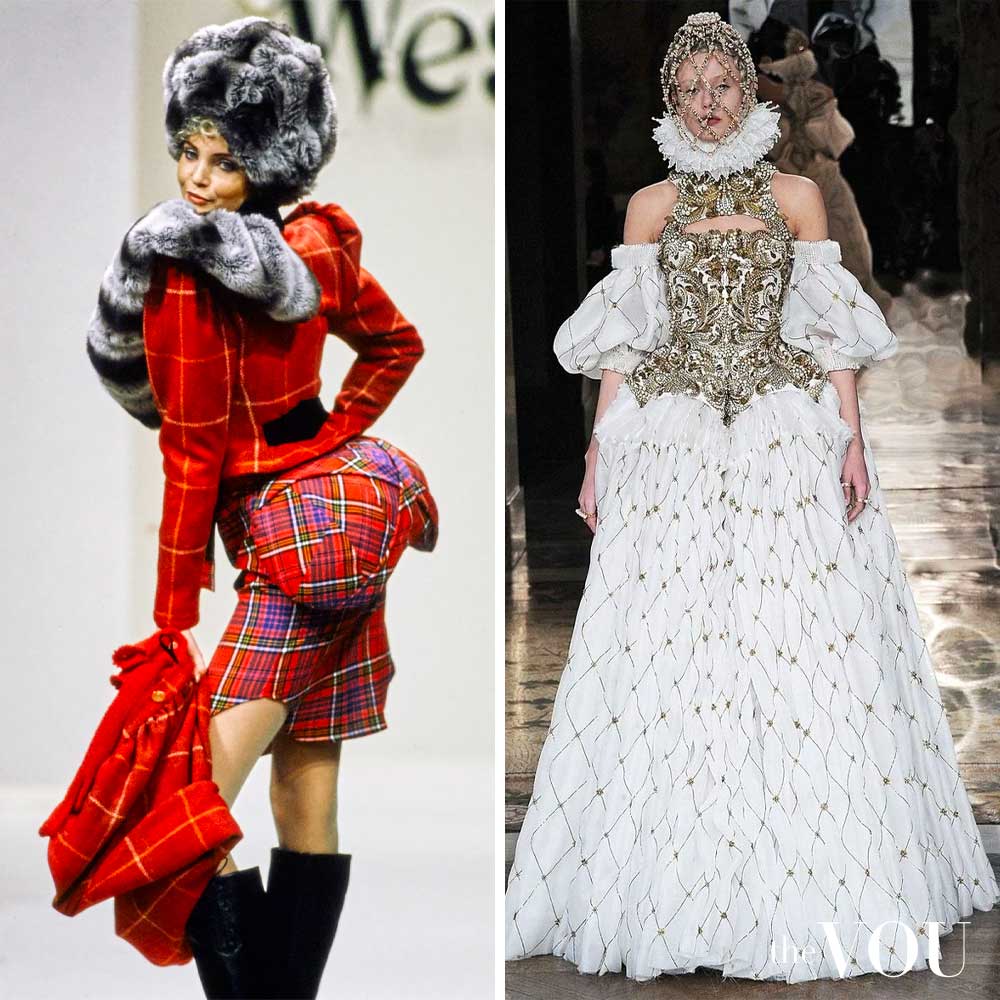

The corset, for example, transforms from a symbol of Victorian restriction into empowerment and self-expression when paired with jeans or a leather jacket.
John Galliano and Alessandro Michele’s lace detailing, structured bodices, chokers, and brooches, once Victorian staples are reimagined as statement accessories in contemporary ensembles.
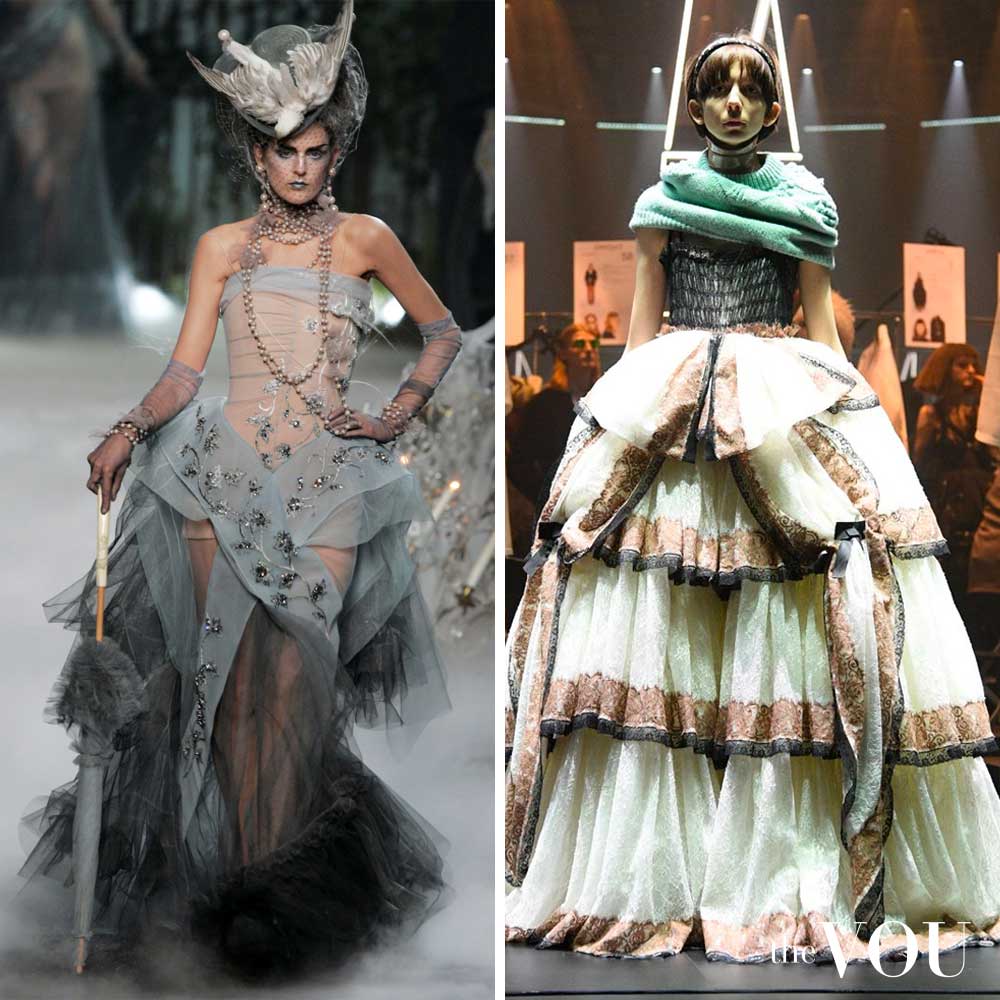

Similarly, designers like Dolce & Gabbana use velvet suits, lace gloves, ruffles, and puff sleeves to emphasize the luxurious and romantic aspects of the era.
By adapting Victorian patterns, contemporary designers challenge and redefine the historical connotations of these garments and ideas of femininity and societal expectations.
Victorian Influence on Fashion Styles
- Corsets – Rococo, Victorian Goth, Steampunk, Cottagecore, Goblincore, Fairy Grunge, Fairycore.
- Lace – Goth, Boho-chic, Romantic, Lolita, Coquette.
- Victorian Boots – Punk, Steampunk, Cottagecore, Goblincore, Fairy Grunge, Fairycore.
- Bustle Skirts – Steampunk, Avant-garde, historical reenactment, and theatrical fashion.
- Cameo Jewelry – Romantic, Classic, Vintage.
- Velvet Fabric – Rococo, Goth, Indie, Victorian Goth.
- Rep Ties and Oxford Shoes – Aristocrat, Dark Academia, Preppy.
- Top Hats – Aristocrat, Steampunk, Victorian Goth, Dapper, and Dandy.
- Capelets – Goth, Fantasy, and Fairycore.
After years of managing hundreds of fashion brands from London’s office of a global retailer, Mandy has ventured into freelancing. Connected with several fashion retailers and media platforms in the US, Australia, and the UK, Mandy uses her expertise to consult for emerging fashion brands create top-notch content as an editorial strategist for several online publications.


